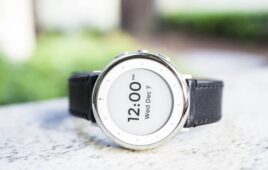
[Image from Wikipedia]
The research team has developed a way to deliver a bioactivated, biodegradable, regenerative substance without clogging through a noninvasive catheter. The method was tested in rat models.
“This research centered on building a dynamic platform, and the beauty is that this delivery system now can be modified to use different chemistries or therapeutics,” Nathan Gianneschi, a professor of chemistry at Northwestern University and a researcher on the project, said in a press release.
When a heart attack occurs, the heart’s extracellular matrix is destroyed and scar tissue begins to form. Scar tissue can decrease the functionality of the heart. Most heart attack survivors will develop heart disease, which is the leading cause of death in the U.S.
“We sought to create a peptide-based approach because the compounds form nanofibers that look and mechanically act very similar to native extracellular matrix. The compounds also are biodegradable and biocompatible,” Andrea Carlini, first author on the research, said. “Most preclinical strategies have relied on direct injections into the heart, but because this is not a feasible option for humans, we sought to develop a platform that could be delivered via intracoronary or transendocardial catheter.”
The healing method is assisted by self-assembling peptides that are delivered through a catheter to the heart following a heart attack.
“What we’ve created is a targeting-and-response type of material,” Gianneschi, associate director of Northwestern’s International Institute of Nanotechnology, said. “We inject a self-assembling peptide solution that seeks out a target – the heart’s damaged extracellular matrix – and the solution is then activated by the inflammatory environment itself and gels. The key is to have the material create a self-assembling framework, which mimics the natural scaffold that holds cells and tissues together.”
The method was tested in two proof-of-concept tests. The first test showed that the peptide material can be fed through a catheter without clogging and without interacting with human blood. The second test determined if the self-assembling peptides can find damaged tissue to heal it without interfering with healthy heart tissue. The researchers attached a fluorescent tag that they created to the peptides and imaged the heart to see where the peptides end up.
“In previous work with responsive nanoparticles, we produced speckled fluorescence in the heart attack region, but in this case, we were able to see large continuous hydrogel assemblies throughout the tissue,” Carlini said.
The researchers then removed the fluorescent tags and replaced it with a therapeutic that allows the peptides to locate the damaged part of the heart. The researchers say that the process of getting to clinical trial could take several years.
“We started working on this chemistry in 2012, and it took immense effort to produce a modular and synthetically simple platform that would reliably gel in response to the inflammatory environment,” Carlini said. “A major breakthrough occurred when we developed statically constrained cyclic peptides, which flow freely during delivery and then rapidly assemble into hydrogels when they come in contact with disease-associated enzymes.”
Carlini and the researchers programmed a spring-like switch to unfurl naturally circular compounds and create a flat substance with more surface area and better adhesiveness. The switch allows the peptides to self-assemble better to form the scaffolding that most looks like the native extracellular matrix.
The research was published in the journal Nature Communications.




